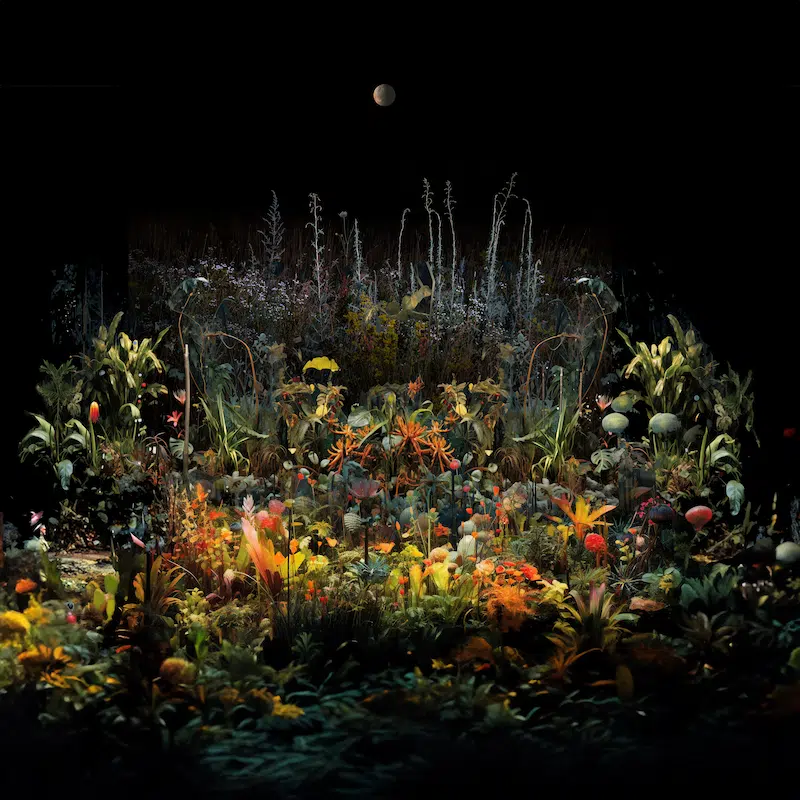
“Magnetic Field,” featured as part of “Night Gardens.”
Much like an artwork, an ecosystem depends upon precision. It demands the perfect set of elements, functioning in harmony, in order to be effective. This comparison between art and nature isn’t lost on artist Mary Mattingly, whose work primarily focuses on environmental concerns.
Throughout her career, Mattingly has been influenced by her upbringing in an agricultural town near Springfield, Massachusetts, where drinking water was polluted by various chemicals. The experience, she says, informed her fascination with “sculptural ecosystems,” each of which explores food, shelter, clean water, and climate change.
One such “ecosystem” is Night Gardens, a series of collages depicting night-blooming plants. To construct these scenes, Mattingly grew the plants inside terrariums and photographed them under varying conditions, from being overgrown to dying away, from being flooded to drying out. The completed collages map how these plants adapt to fluctuating environments, all visualized beneath the contemplative glow of the surrounding terrariums.
Night Gardens, currently on view through February 22, 2025 at Robert Mann Gallery in New York, invites visitors to delve into these enchanted, moonlit worlds.
“Each plant carries histories, symbolisms, mysteries, and mutations, emerging in these collages as emblems of adaptation,” the gallery writes. “In these images, Mattingly cultivates a garden that begins in reality and transforms into an ethereal myth of what could be.”
My Modern Met had the chance to chat with Mary Mattingly about her creative influences, her relationship with nature, and Night Gardens. Read on for our exclusive interview with the artist.
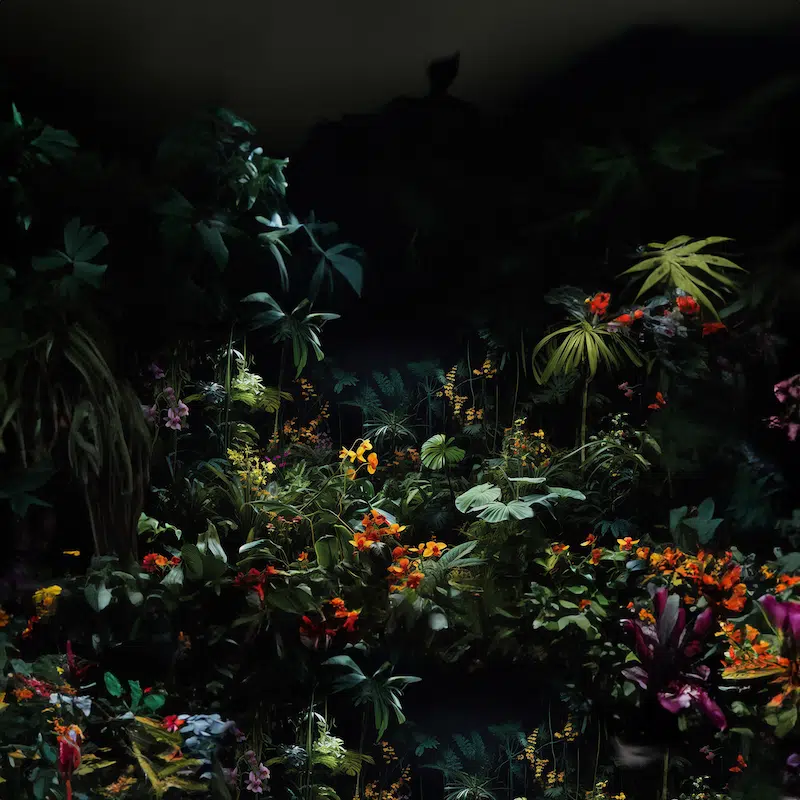
“Forest Floor,” featured as part of “Night Gardens.”
What originally drew you to art, and how did you develop your personal style?
I began making water purification systems from discarded materials as a young person. It wasn’t until later that I saw these as sculptures and made photographs of them and other sculptural tools.
I think I subconsciously developed a personal style then, but growing up in a rural area with agriculture and expansive skies shaped the way I wanted to see and interact with the natural world. I spent most of my time outdoors, and worked on farms, observed seasonal cycles, and developed an appreciation for the land I knew. This connection to the natural world became a more intuitive foundation for my vocation as an artist.
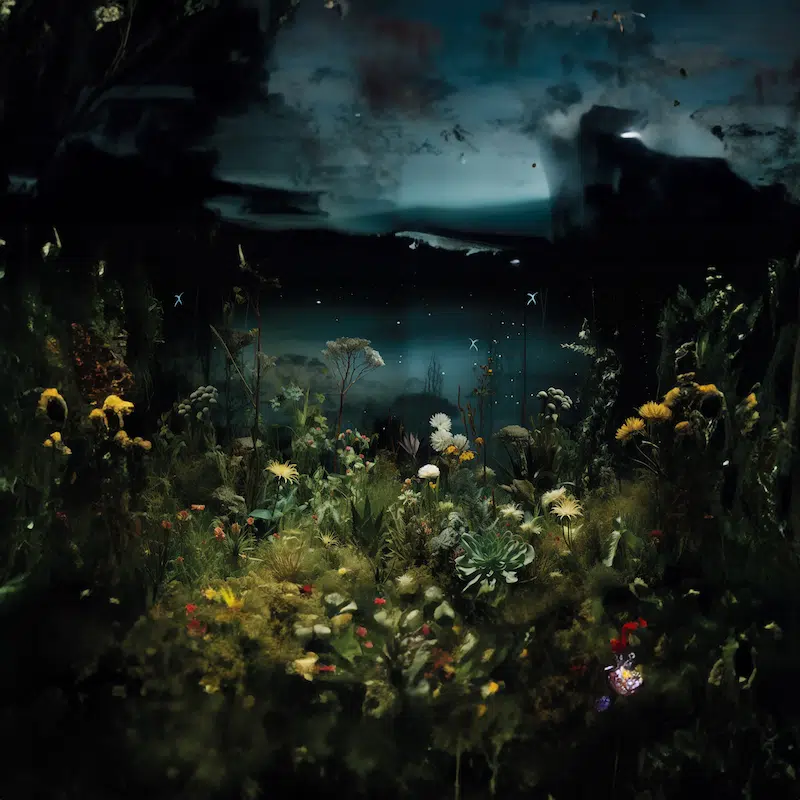
“Ebb of a Spring Tide,” featured as part of “Night Gardens.”
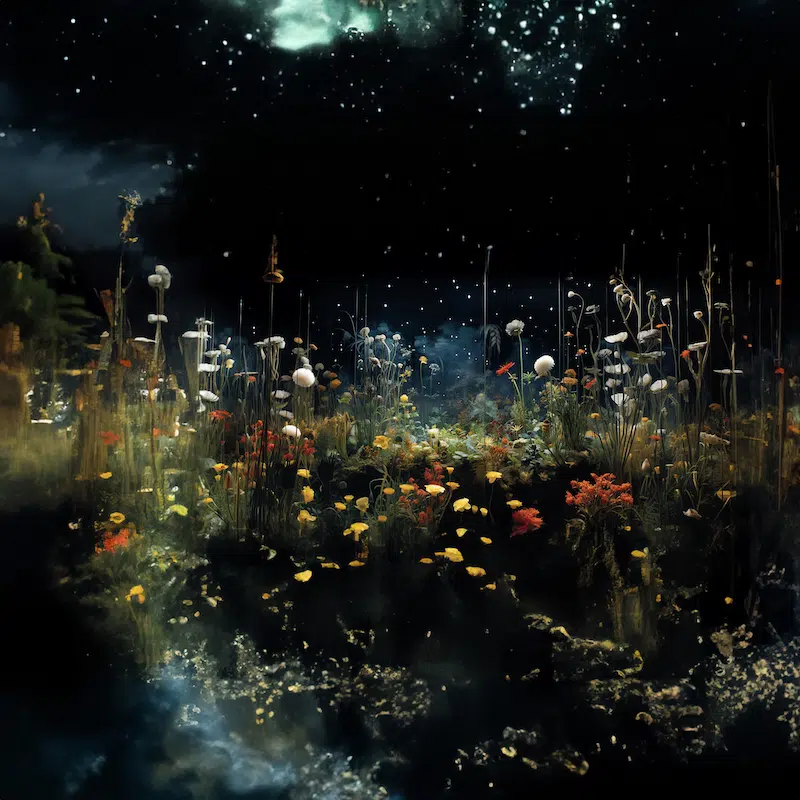
“Lotic Shoal,” featured as part of “Night Gardens.”
What intrigues you about naturalistic imagery, and how do you incorporate this throughout your art?
I was trained as a photographer, and later integrated sculpture with photography. I’m enthralled with learning about how parts of ecosystems function: how life shifts, decays, and adapts.
When I work with materials and subjects that are in transition, whether it’s plant life, water, or reclaimed objects, I document that process as if it were undergoing a type of photographic development. Part of what I’m so taken by with studying ecosystems is how one small change can make a cascade of larger change possible, or how one element in a system I try to design that’s not working in the way I intended can alter an entire chain.
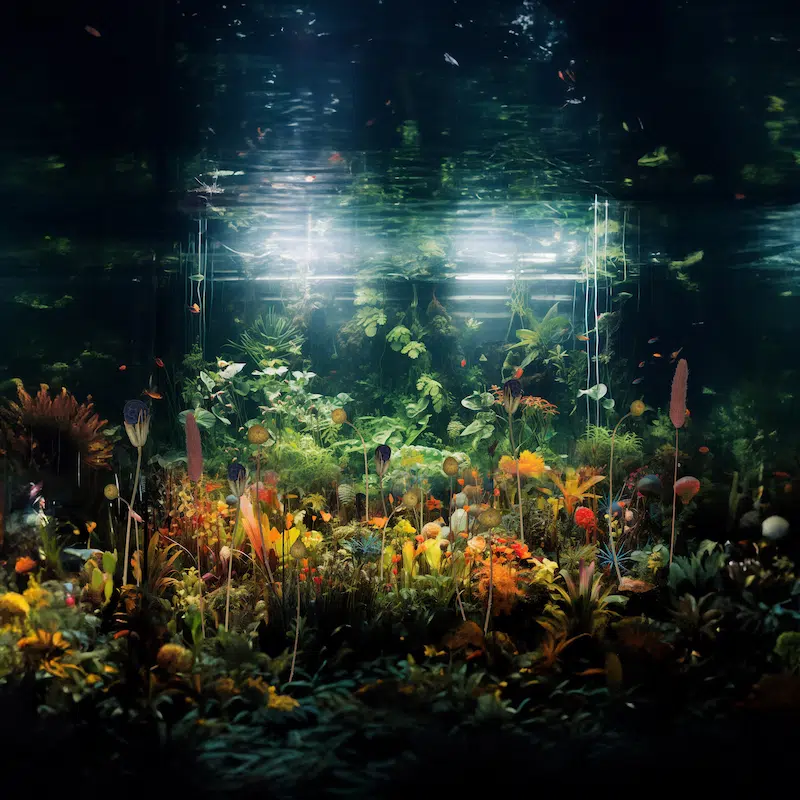
“Tidepool,” featured as part of “Night Gardens.”
Environmentalism and ecosystems figure strongly throughout your art. What compels you to focus on these themes?
Growing up in an area where drinking water was polluted by agricultural chemicals, I became aware early on of the importance of clean water access. It wasn’t until I collaborated on building, and then lived in a floating, fairly self-sufficient living space that I began to understand the nuance of ecosystem design—how human-made systems can mimic, support, or disrupt natural cycles.
This realization has guided much of my work, leading me to explore the possibilities in creating reciprocal, regenerative systems rather than extractive ones.
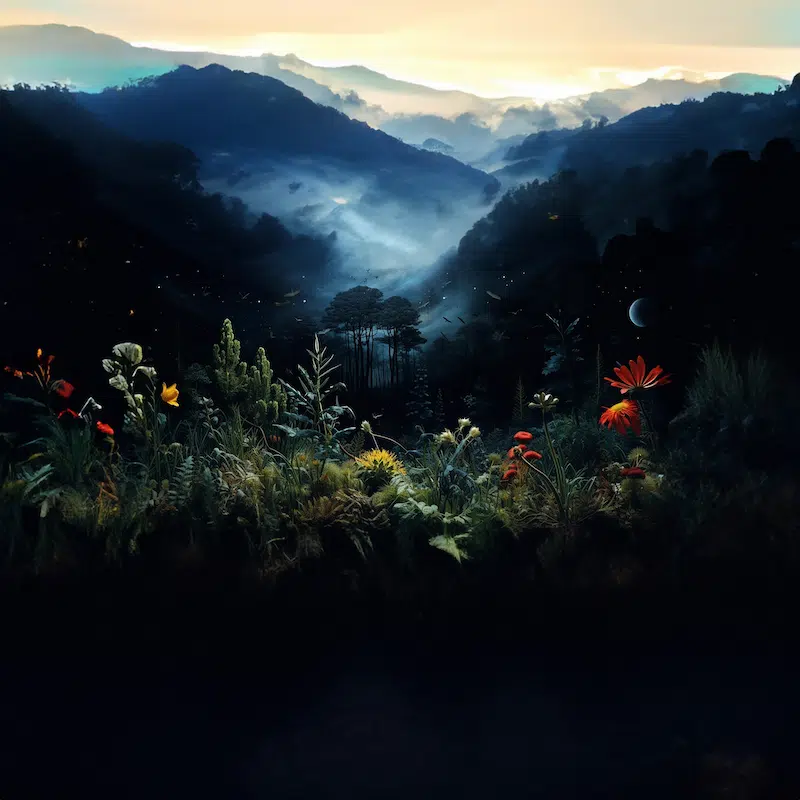
“Sun to Moon,” featured as part of “Night Gardens.”
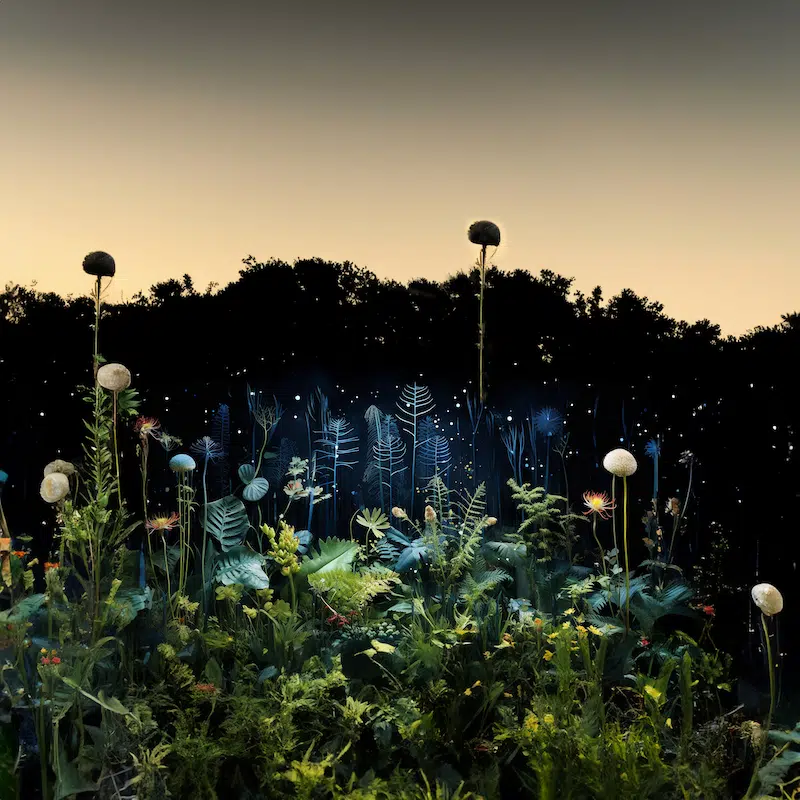
“Low Tide,” featured as part of “Night Gardens.”
What inspired Night Gardens, and what was your creative process in creating the series?
While working at Socrates Sculpture Park, we planted a “moon garden,” night-blooming plants meant to be experienced in the dark. I stayed there late on several nights, photographing how blooms responded to the night sky in a bright city. Alongside this, I had terrariums in my studio from a previous project, and brought some of the plants there.
I created different environments inside of the terrariums. I’d flood them with water, let them dry out, and experiment with them. I documented how their growth changed, from being overgrown to dying away. Learning from plants shifting in response to time and environment became the foundation for Night Gardens.
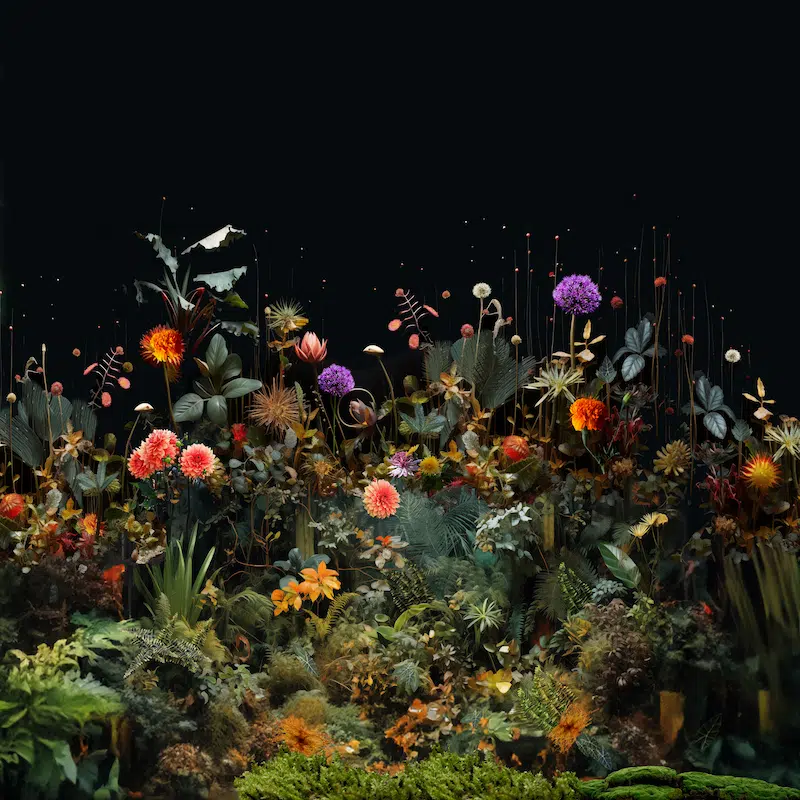
“Night Garden,” featured as part of “Night Gardens.”
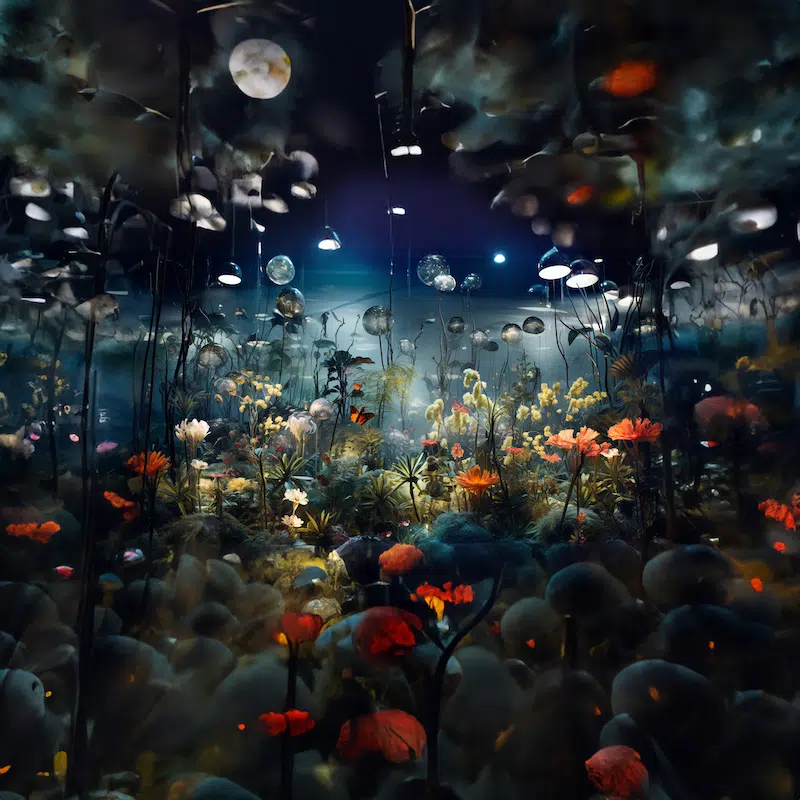
“Moon Garden,” featured as part of “Night Gardens.”
How did you decide to use photography and collage as your preferred media for Night Gardens? What made these two media the most effective?
Photography has always been central to my practice, and I saw the growing process of plants inside terrariums as a parallel to film development—they both require patience and have a certain level of unpredictability.
I’ve also always made sculptures, which inherently function like collages. They are made of reclaimed common materials. Translating this sculptural sensibility into a two-dimensional space felt like an important way to explore the layering of time, light, organic growth, and change in a riparian environment in Night Gardens.
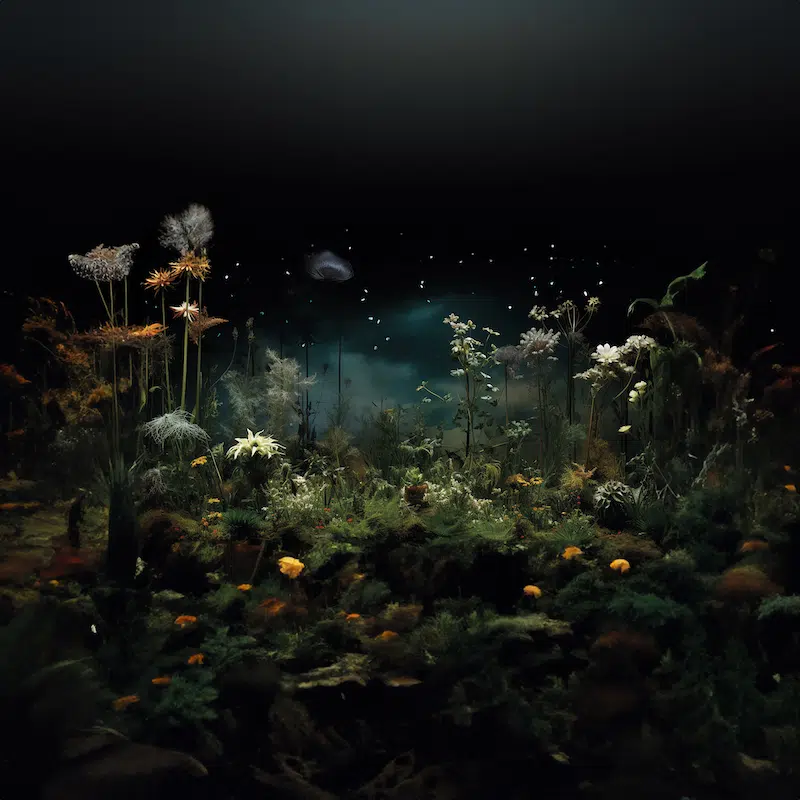
“Moon Field,” featured as part of “Night Gardens.”
What do you hope people will take away from Night Gardens and your work as a whole?
I often describe my work as a series of proposals—proposals for a different way of being, questioning, or considering time and community. I hope Night Gardens is another kind of proposal, one that evokes wonder and potential—how we can reimagine our surroundings and work within nature’s evolution and the multiple climate crises, rather than against it. Imagination is critical in co-creating our present and futures, especially in the face of ecological and social challenges.
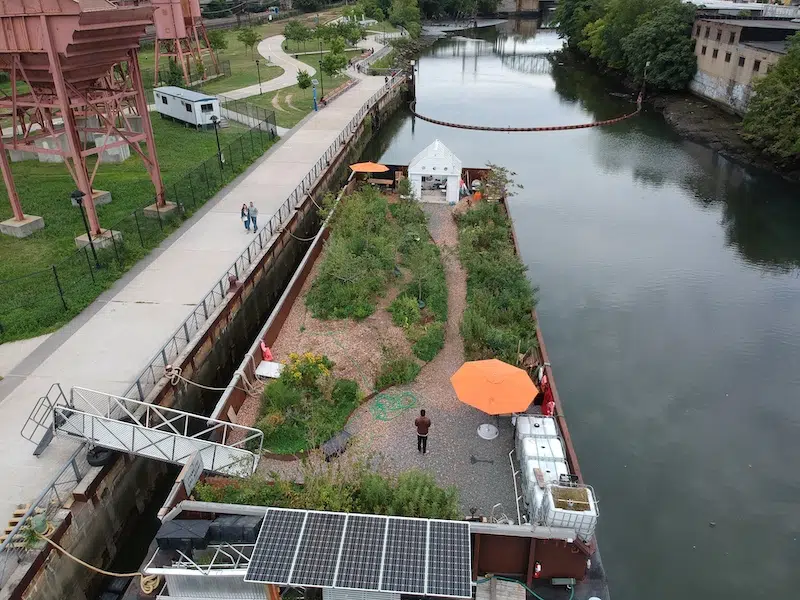
“Swale,” at the Concrete Plant Park in the Bronx, NY.
Do you have any exciting projects coming up?
Yes! One major project is Shoal, which builds on a previous project called Swale, a floating food forest on a barge where people could forage foods for free. It was important to have Swale launch in New York City, where foraging on the city’s public land has been off-limits, so Swale was on the water as a workaround.
Shoal will continue the exploration of agroforestry on the water while incorporating salt-tolerant edible plants. I want Shoal to serve as both a speculative proposal and space that may shift peoples perspectives around what cities can supply, rethinking how else we can use waterways as shared spaces in cities.
I’m also excited about a new sculpture for the Bronx Museum in an exhibition that will open in April.
Mary Mattingly: Website | Instagram
My Modern Met granted permission to feature photos by Mary Mattingly.
Related Articles:
Daniel Popper’s Evocative Public Sculpture Speaks to Human Relationships and Nature
Artist Creates Intricate Paper Sculptures Inspired By Shapes Found in Nature
